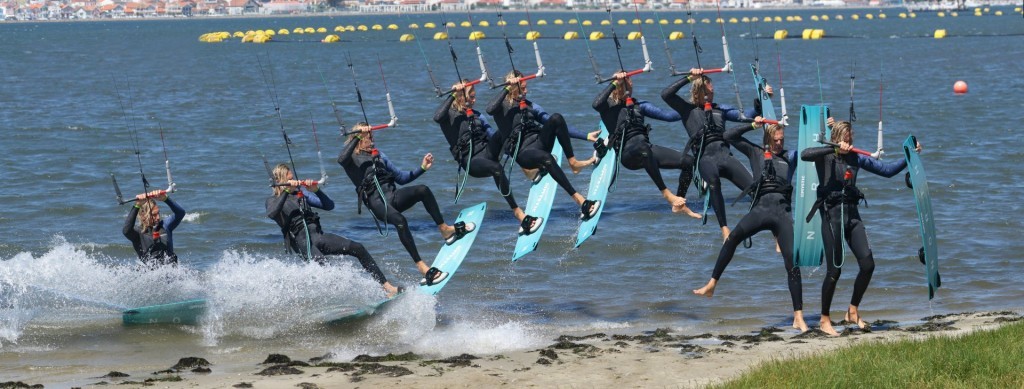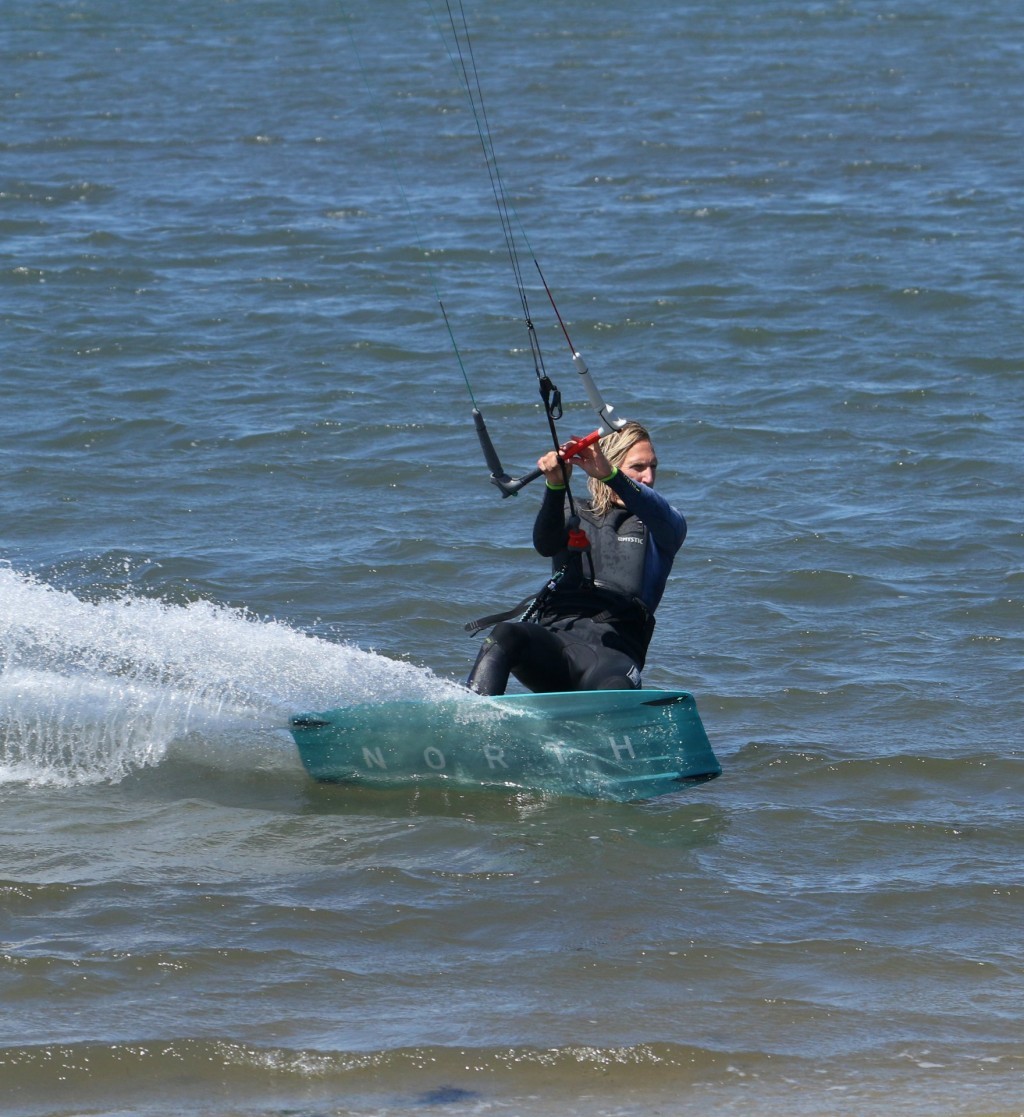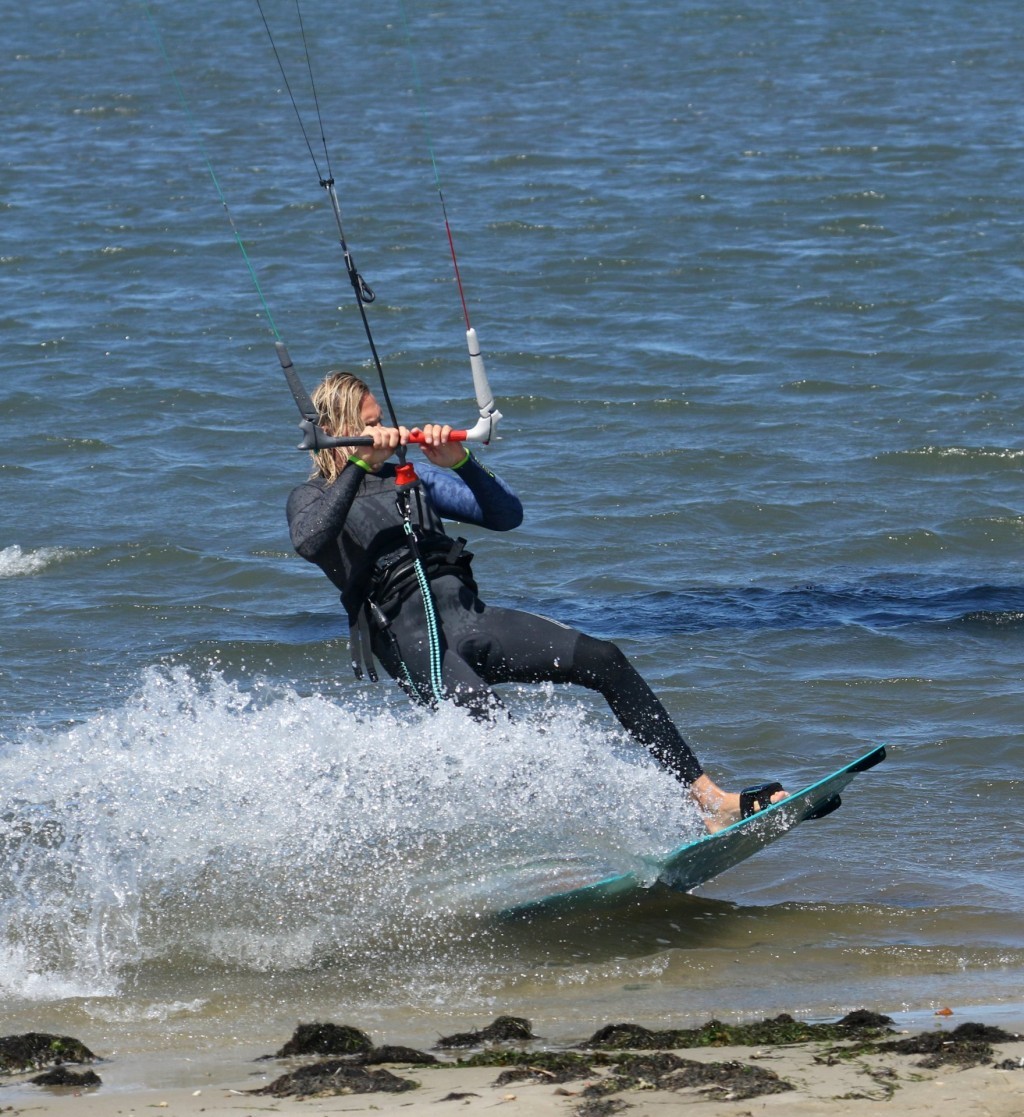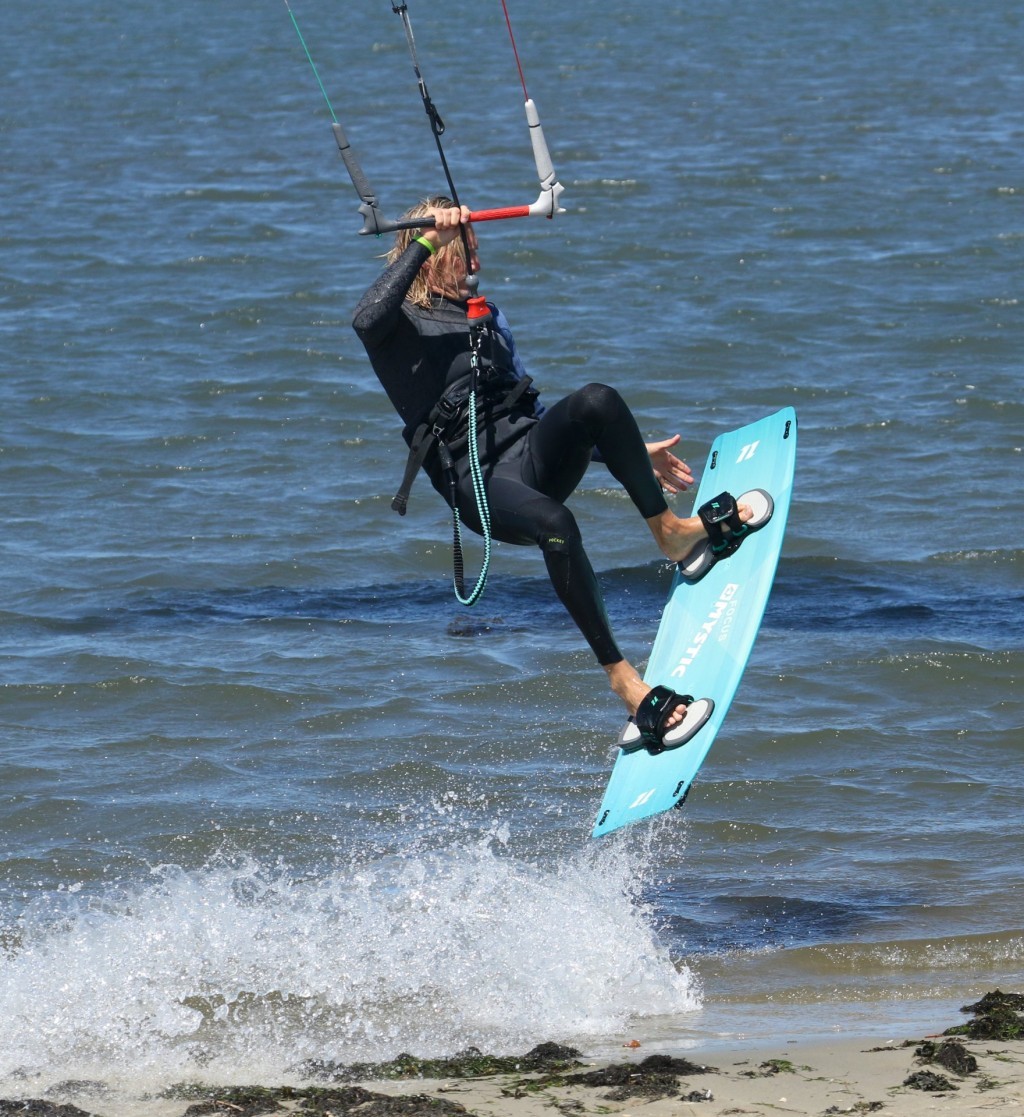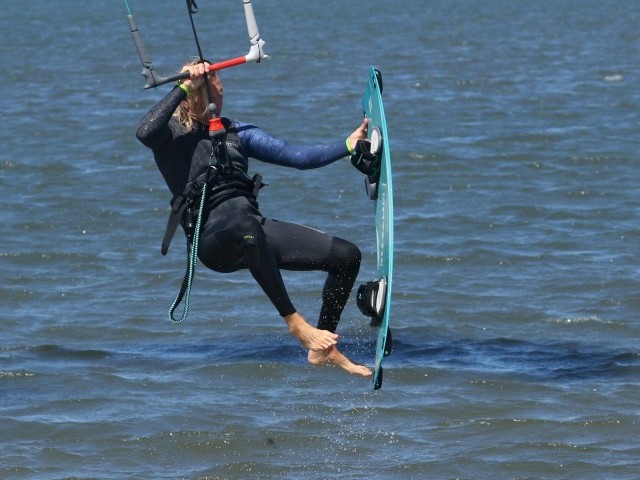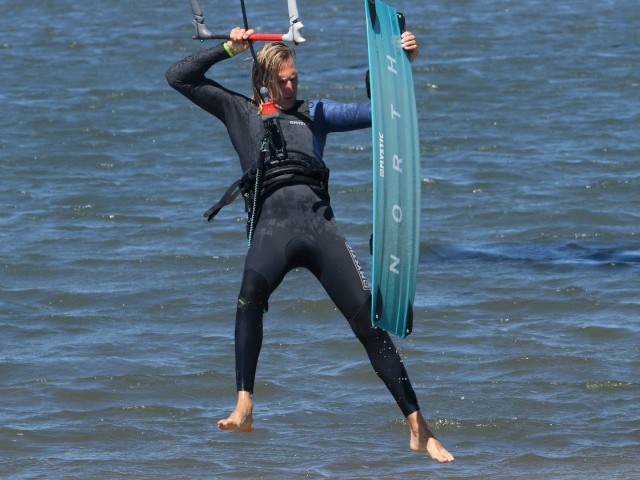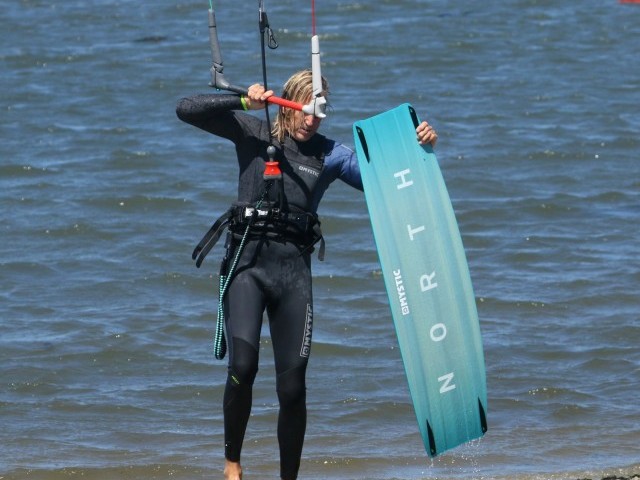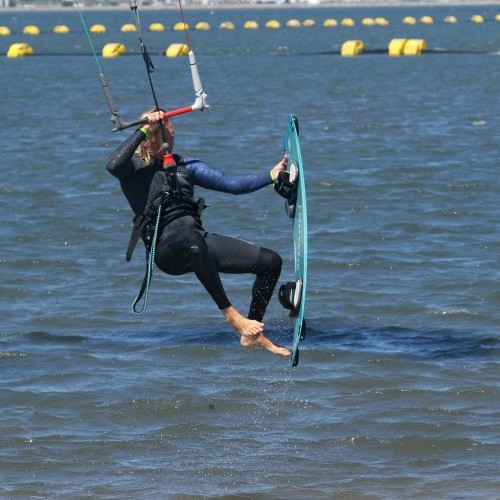
Board Off Dismount
Technique / Intermediate
Introduction
Whilst pondering all the moves, grabs, transitions, airs, washes, strokes, tweaks, pops, passes and loops that we’ve covered on these hallowed pages, it struck us that we haven’t been particularly generous on the dismounts. To make amends, here is the board off dismount. Actually, a very achievable trick, since there’s no need to get it back on, it works in various wind directions, and when you get it right, it looks rather casual.
However, it does come with a warning! Jumping onto land has inherent risks, so please take care, make sure there are no obstacles to befriend, no other kiters to tangle with and no other beach users to terrify or injure. With that said, let’s consider what lies ahead. We’ll take you through this move using the heelside edge as per the simplest grab, as it’s the simplest way to get the board off if you’re no yogi.
The Approach Pic A.
Before you start this move, it is worth appreciating that your goal is to land on your cherished feet, potentially bare and cold on what could be stony or slippy. This means that your landing wants to be soft. Hence you don’t want bags of speed or tonnes of lift. That said you do need an edge for tension, so head upwind to keep the lines tight whilst slowing yourself down. It can help to let the bar out a touch, so you can point higher and kill some momentum. Your kite wants to be parked either at 1 or 11, depending on which direction you’re heading. This way you can still send it without the kite travelling too far back. Think air gybe. In preparation of getting the board off, it never hurts to wiggle your feet loose in the straps. The final point is distance! How far from the hard stuff should you take off? If in doubt, further out. It’s undoubtedly preferable to land in the water than to plough up the beach on your trusty twinny. Looking at the pic, Christian is on a decent edge, not hammering in, his bar is out a tad, and he’s still given the kite a good send from 11 o’clock. If you could see his feet, they would be ever so slightly back on the pads.
The Launch Pic B.
Once again think air gybe. You want to dump momentum, stop the kite going back, give yourself a helping leg up and use the lift you’ve asked for from the kite. All before your fins and edge grind in natures original P50. Looking at Christian he’s carved up to put the brakes on, he’s fully levelled the bar to stop the kite moving back, he’s kicking off against the edge with his back leg to initiate the takeoff, and he’s pulling in on the bar for lift.
Focus Pic C.
As soon as you can, you must focus on getting the grab. Hopefully, you’re not boosting, so without serious hangtime, you need to get things rolling. Christian already has his front handoff, quite literally looking for the grab. He’s lifting his knees to bring the board up towards his hand whilst twisting upwind, which gives him room to reach the board. With his backhand centred on the bar he keeps it both level and on the sweet spot. You can see here how his feet are pulled back and loose in the straps. It’s vital to keep the bar in. If you dump power with your front handoff, you will encourage the kite to overfly as you pendulum underneath it. Not the end of the world in the water but best avoided on the hard stuff.
Socks Off Pic D.
Once you get a solid grab on the board, somewhere near the fin on your heelside edge, you can slide your feet out. Grabbing here you’ll find it more natural to keep your front knee high whilst sliding the front foot out first. If you keep the board high and away from you on a stretched arm, your back foot will obediently follow. Christian still has the bar on the sweet spot, and he’s holding his board out in front of him at arm’s length.
The Descent Pic E.
Style and grace are optional, depending on personal coordination. Christian’s excuse is that a wide position on landing is more balanced. Seeing as you’ve got the board gripped in your leading hand, it will be aiming down like a composite guillotine. Hence the need to keep it up and away from you. At the same time, you want a soft reception, and the only way for such a marshmallow landing is to keep the bar in on the sweet spot and float down like a leaf in autumn. Looking at the pic, you can also see that Christian is using his backhand to steer the kite forwards, pushing the outside of his hand up, just as you would for body dragging, think elbow high. He’s doing this to make sure the kite steers back up to 12 o’clock and doesn’t get left behind with the potential to Hindenburg.
Touch Down Pic F.
If all goes well, you’ll come down nice and soft. Keeping the board away from you guarantees 10 toes, and moving the kite gently forwards maintains that everything is moving slowly forwards in the same direction. Here Christian still has his board at arm’s length and up, his bar is on the sweet spot, and he’s steering it ever so slightly forwards. Job done. Should the kite then pull forwards, you can lift it and sheet out.
Top Tips
If you already have experience of taking the board off, you have an advantage. For those of you with no prior freeing of the feet, it will be a good idea to practice the board off in deeper water to get the idea. Then as briefly flirted with earlier, to start attempting this you could do a lot worse than aiming to land in shallow water. Once you feel confident and get the hang of all the parts, it’s then time for the full-blown dress rehearsal.
Have a look at the sequence and videos for the full walkthrough.
Common Problems
If you’re struggling to get your feet out. Make sure to lift the board to you, knees up and in front of you, rather than flicking the board behind you and reaching down. With the board up and forwards, it will slip off your feet as you pull them out. You can also loosen your straps, making it easier still to drop your feet.
If you go flying up the beach and struggle to control yourself, the kite and your landing it’s a sure sign of too much speed. Take it easy, use your edge and make sure that you have your kite low enough to start with. This way, you can get the lift without breaking any speed limits.
Sketchy landings with slack lines and a kite that is threatening to drop are far from ideal. It means that you’ve sent the kite too far, or too long and you’ve possibly let the bar out also. Try a short sharp send and make sure that you level the bar before taking off. Pre-empt your take off with a little kick and steer the kite forwards with your backhand.
Keystones
- Controlled speed and kite at 11 or 1
- Short sharp send
- Level and stamp
- Early grab, the board held up and away
- Lift elbow to steer kite forwards with the bar on the sweet spot
This technique article was in Issue 83 of IKSURFMAG.
Related
By Christian and Karine
Christian and Karine have been working together as a coaching team, running improver to advanced kitesurfing clinics since 2003.






